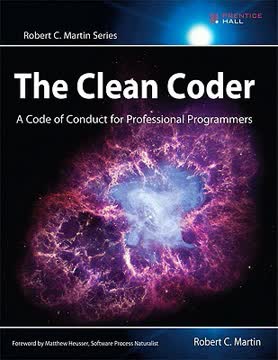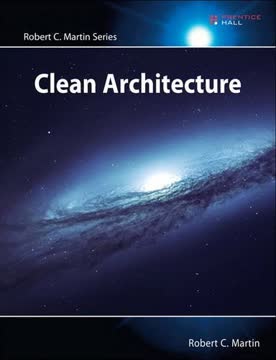Key Takeaways
1. Adopt a leverage mindset to maximize impact
Leverage is defined by a simple equation. It's the value, or impact, produced per time invested.
Focus on high-leverage activities. Effective engineers understand that time is their most limited resource. They constantly evaluate tasks based on their leverage – the value produced divided by time invested. This mindset helps prioritize activities that generate the most impact with the least effort.
Identify leverage points. Look for opportunities where small investments of time can lead to disproportionately large outcomes. This could involve automating repetitive tasks, building reusable tools or abstractions, or making strategic decisions that affect multiple projects. By focusing on these high-leverage activities, engineers can dramatically increase their productivity and impact.
2. Optimize for learning to accelerate growth
The faster that you can iterate, the more you can learn.
Adopt a growth mindset. View challenges and failures as opportunities to learn and improve, rather than as reflections of your inherent abilities. This mindset enables you to tackle harder problems and persist in the face of setbacks.
Create tight feedback loops. Seek environments and projects that provide rapid feedback on your work. This could involve:
- Working on products with short development cycles
- Soliciting frequent code reviews
- Using continuous integration and deployment
- A/B testing features with real users
The faster you can learn from your efforts, the more quickly you'll grow your skills and impact.
3. Prioritize ruthlessly to focus on high-value activities
Focus on what directly produces value.
Regularly reassess priorities. Maintain a single, easily accessible list of all your tasks. Periodically review this list and ask yourself: "Is there something else I could be doing that's higher-leverage?" This habit ensures you're always working on the most impactful tasks.
Focus on important, non-urgent work. Stephen Covey's time management matrix categorizes tasks into four quadrants based on urgency and importance. Effective engineers prioritize "Quadrant II" activities – important but not urgent tasks like learning, relationship-building, and long-term planning. These activities often have the highest leverage but are easily neglected in favor of urgent tasks.
4. Invest in iteration speed to learn and improve faster
Move fast to learn fast.
Build rapid iteration into your workflow. Invest time in tools and processes that speed up your development cycle:
- Automated testing and continuous integration
- Fast compile times and quick deployment processes
- Efficient debugging tools and workflows
Create tight feedback loops. The faster you can validate ideas and learn from mistakes, the more effective you'll be. This applies to both technical work and broader decision-making:
- Break large projects into smaller, shippable increments
- Use A/B testing to quickly validate product changes
- Seek early feedback on designs and implementations
5. Use data to drive progress and decision-making
If you can't measure it, you can't improve it.
Choose the right metrics. Carefully select metrics that align with your goals and incentivize the right behaviors. Be wary of vanity metrics that may look good but don't actually indicate progress toward important outcomes.
Instrument everything. Build comprehensive logging and monitoring into your systems. This provides visibility into how your software is performing and behaving, enabling you to:
- Quickly identify and debug issues
- Make data-driven decisions about improvements
- Track progress toward goals
Ensure data integrity. Bad data is often worse than no data. Invest time in validating your data collection and processing pipelines to ensure the accuracy of your metrics.
6. Validate ideas early and often to reduce wasted effort
Don't delay … Get feedback. Figure out what's working.
Use rapid prototyping. Build quick, minimal versions of features to test core assumptions before investing in full implementations. This could involve:
- Paper prototypes for user interface designs
- Fake backends to simulate API responses
- Limited rollouts to small user groups
Embrace A/B testing. Whenever possible, use controlled experiments to validate the impact of changes. This data-driven approach helps separate good ideas from those that just sound good in theory.
Seek diverse feedback. Don't work in isolation. Regularly share your work with colleagues, users, and stakeholders to gather different perspectives and uncover potential issues early.
7. Improve project estimation skills to manage time effectively
A good estimate is an estimate that provides a clear enough view of the project reality to allow the project leadership to make good decisions about how to control the project to hit its targets.
Break projects into granular tasks. Decompose large projects into smaller, more easily estimated components. If a task will take more than a day or two, it probably needs further breakdown.
Account for the unknown. Build buffer time into estimates to account for unexpected complications, interruptions, and the inherent difficulty of perfectly predicting software development timelines.
Track and learn from past estimates. Keep records of your estimates and actual completion times. Regularly review this data to identify patterns and improve your future estimation accuracy.
8. Balance code quality with pragmatism
Balance quality with pragmatism.
Invest in code quality strategically. Recognize that not all code needs the same level of polish. Prioritize quality investments in:
- Core abstractions and frequently used libraries
- Areas of the codebase with high change frequency
- Code that's critical to the product's functionality or performance
Use code reviews effectively. Code reviews can improve quality and share knowledge, but they can also slow down development if overused. Find a balance that works for your team, potentially using different levels of review for different types of changes.
Manage technical debt. Accumulating some technical debt can be a strategic choice to move faster, but it's crucial to "pay it off" regularly. Schedule time for refactoring and improvement to prevent debt from becoming unmanageable.
9. Minimize operational burden for long-term efficiency
Simplicity has been a value and characteristic of Instagram from the beginning.
Embrace operational simplicity. When designing systems and processes, always ask, "What's the simplest thing that could work?" Complexity increases operational burden and makes it harder to maintain and evolve systems over time.
Automate repetitive tasks. Identify manual, repetitive work and invest in automating it. This not only saves time but also reduces the chance of human error in routine operations.
Build systems to fail fast. Design your software to quickly detect and report errors, rather than attempting to work around them. This makes issues easier to identify and debug, reducing the long-term operational burden.
10. Invest in your team's growth to amplify overall effectiveness
The higher you climb up the engineering ladder, the more your effectiveness will be measured not by your individual contributions but by your impact on the people around you.
Prioritize hiring and onboarding. Recognize that bringing in and effectively ramping up new team members is one of the highest-leverage activities you can engage in. Invest time in creating thorough onboarding processes and mentoring new hires.
Foster a culture of learning and improvement. Encourage knowledge sharing through:
- Regular tech talks and lunch-and-learns
- Pair programming and code reviews
- Post-mortems after incidents and major projects
Build shared ownership. Avoid knowledge silos by promoting shared code ownership and cross-training. This improves team resilience and creates more opportunities for learning and collaboration.
Last updated:
FAQ
What's The Effective Engineer about?
- Focus on Engineering Effectiveness: The book emphasizes maximizing impact through high-leverage activities rather than working harder or longer.
- Framework for Success: Introduces "leverage" as a framework to analyze and prioritize tasks for the highest return on investment.
- Actionable Strategies: Offers practical strategies and insights from successful engineers and leaders in the tech industry.
Why should I read The Effective Engineer?
- Enhance Your Career: Helps you become a more effective engineer, leading to better job performance and career satisfaction.
- Learn from Experts: Shares lessons from Edmond Lau's experiences at top tech companies like Google and Quora.
- Practical Framework: Provides a structured approach to improving work habits and decision-making processes.
What are the key takeaways of The Effective Engineer?
- Leverage is Key: Focus on high-leverage activities that maximize impact, defined as value produced per time invested.
- Iterate Quickly: Encourages validating ideas early and often to avoid wasted effort.
- Prioritize Learning: Emphasizes environments that foster growth and continuous skill investment.
How does The Effective Engineer define leverage?
- Value per Time Invested: Leverage is the value or impact produced per unit of time invested in an activity.
- High-Leverage Activities: Focus on tasks that yield the highest return on investment, often following the 80-20 rule.
- Maximizing Impact: Prioritize work to ensure time is spent on tasks producing significant outcomes.
How can I focus on high-leverage activities as suggested in The Effective Engineer?
- Identify Key Tasks: List and evaluate tasks for potential impact, focusing on those aligning with goals.
- Use the Pareto Principle: Apply the 80-20 rule to prioritize tasks yielding the most results.
- Regularly Reassess Priorities: Continuously evaluate and adjust focus to work on impactful activities.
What strategies does The Effective Engineer suggest for optimizing learning?
- Adopt a Growth Mindset: Embrace the belief that skills can be developed through effort and learning.
- Seek Learning Opportunities: Look for environments with strong mentorship and skill development opportunities.
- Invest in Continuous Learning: Dedicate time to learning new skills through various educational methods.
How does The Effective Engineer recommend validating ideas early and often?
- Use Prototyping: Build MVPs or prototypes to test ideas with real users for quick feedback.
- Implement A/B Testing: Compare different product versions to measure impact on user behavior.
- Gather User Feedback: Seek feedback from users and stakeholders throughout development.
What specific methods does The Effective Engineer recommend for project estimation?
- Decompose Tasks: Break projects into smaller tasks for improved estimation accuracy.
- Use Historical Data: Validate estimates against past data to refine prediction skills.
- Probability Distributions: Treat estimates as ranges of outcomes for better planning.
How does The Effective Engineer define technical debt?
- Deferred Work: Accumulated work to improve code quality postponed during development.
- Interest Payments: Unaddressed technical debt increases maintenance costs over time.
- Strategic Repayment: Prioritize repaying high-impact areas to maintain a healthy codebase.
What is the importance of feedback loops in The Effective Engineer?
- Continuous Improvement: Feedback loops allow ongoing validation of ideas and processes.
- Informed Decision-Making: Transform guesswork into data-driven decisions with feedback mechanisms.
- Iterative Learning: Encourages an experimental mindset for valuable insights in future projects.
What are the best practices for onboarding new engineers according to The Effective Engineer?
- Structured Onboarding: Include mentorship, training materials, and clear expectations.
- Codelabs and Talks: Teach core abstractions and introduce team values through structured resources.
- Starter Tasks: Assign manageable tasks to build confidence and integrate new hires.
What are the best quotes from The Effective Engineer and what do they mean?
- "If you can’t measure it, you can’t improve it.": Emphasizes the necessity of metrics in driving progress and effectiveness.
- "Focus on high-leverage activities.": Encourages prioritizing tasks that yield the greatest impact.
- "Moving fast enables us to build more things and learn faster.": Highlights the importance of iteration speed in product development.
Review Summary
The Effective Engineer receives mostly positive reviews, praised for its practical advice on productivity, leveraging time, and improving engineering practices. Readers appreciate the real-world examples from tech companies and find it particularly valuable for early-career engineers. Some criticize repetitiveness and autobiographical elements. The book covers topics like prioritization, automation, and fostering a learning culture. While experienced engineers may find less new information, many still consider it a worthwhile read for its reminders and comprehensive overview of effective engineering practices.
Similar Books










Download PDF
Download EPUB
.epub digital book format is ideal for reading ebooks on phones, tablets, and e-readers.




